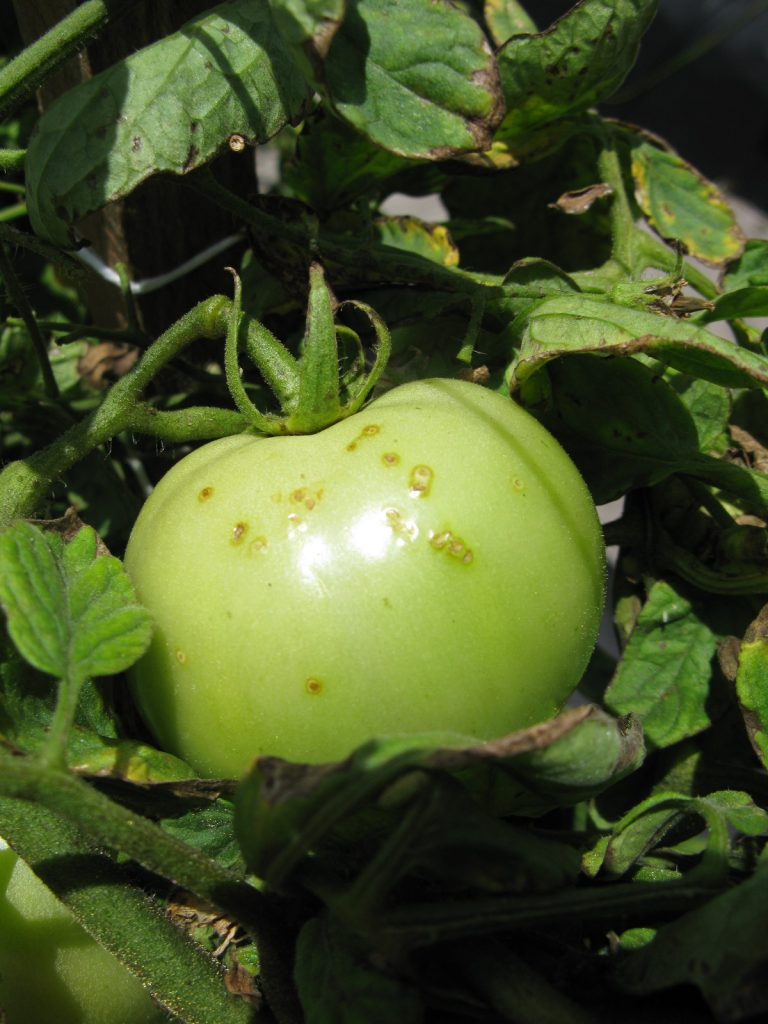
This is the first in a two-part series on the disease and UF/IFAS research.
By Clint Thompson
One tomato disease has long been a thorn in the side of producers throughout the Southeast.
Gary Vallad, professor of plant pathology at the University of Florida Institute of Food and Agricultural Sciences (UF/IFAS) Gulf Coast Research and Education Center, discussed bacterial spot which is caused by a form of bacteria known as xanthomonads.
“Bacterial spot has been a challenge for tomato producers in Florida and other parts of the Southeast and really, globally, for over 100 years. It’s one of these things where it’s always there, always present. I think the industry is pretty good about managing it, but a lot of it is based on weather,” Vallad said. “When we get these weather patterns where we’re getting a lot of rain, early fall and even late spring, it can be really difficult to manage this disease even with the best tools that we have available to us.
“It’s also a disease where it’s constantly robbing yield. I think based on work we’ve done in the past with experimental varieties that have really good resistance, that’s where you can really see this effect.”
Disease Symptoms
Bacterial spot symptoms can affect all parts of the plant above ground, according to UF/IFAS. Leaf lesions start as circular and water-soaked spots but will turn dark brown to black with a wet or greasy appearance.
“The severity is always going to vary, and it’s driven by the environment at the time. How much rain are you getting; how high is the humidity; and how much dew are you getting in the morning? We’re doing a lot of work right now looking at other things that help spread it,” Vallad said.
“We’ve always had issues with copper. Our populations in Florida and actually a number of places throughout the Southeast are becoming predominantly copper tolerant. That creates a huge challenge there. A number of growers use some biologicals as well as Actigard with regards to enhancing plant resistance. They do work, just not great. We’ve done some studies and even found that even though you’re using these types of materials, a lot of cases you’re really not improving yields.”
Thanks to funding from the U.S. Department of Agriculture National Institute of Food and Agriculture, UF/IFAS plant pathologists led a global research team that found the pathogen that causes bacterial spot has multiple genetic variations.
Part 2 will be posted on Thursday.










